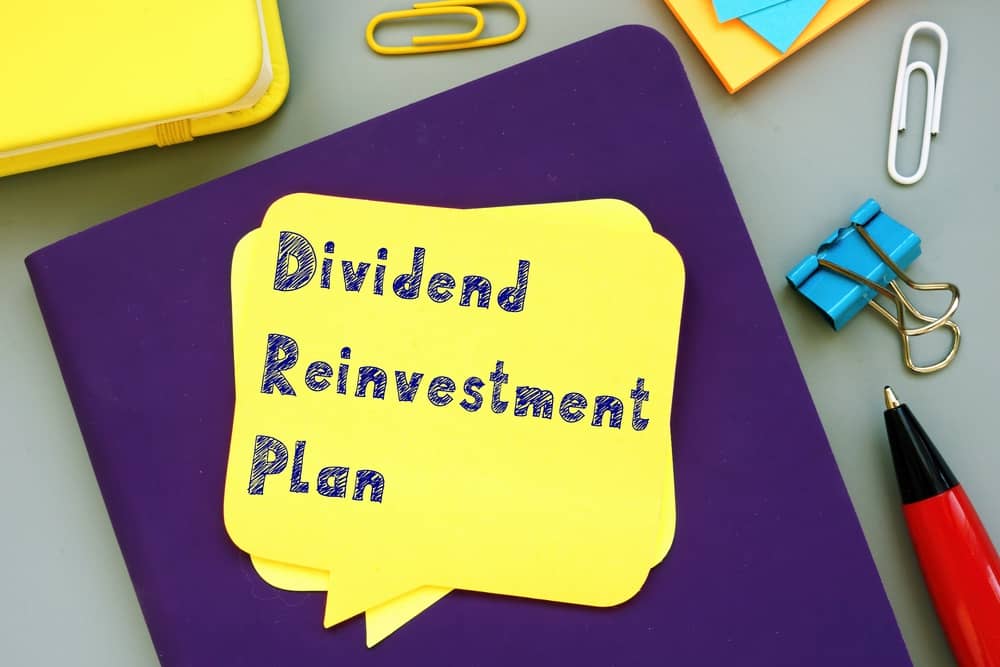We are always on the lookout for innovative investment opportunities, and we recently took a deep dive into Fundrise, a real estate crowdfunding platform that’s been making waves in the investment community over the past few years.
Disclaimer: This information is general in nature and for informational purposes only. It is not personal financial advice and has not taken into account your personal financial position or objectives. Make sure to refer to a licensed financial or tax advisor.
Real estate has long been a go-to for building wealth, but it’s often felt out of reach for the average Joe—until now. Fundrise is changing the game by making real estate investing accessible to just about anyone with an internet connection.
Fundrise is a real estate investment platform that aims to revolutionize the way people invest in real estate. Founded in 2010, Fundrise’s mission is to provide access to high-quality real estate investments to individuals who may not have had the opportunity to invest in this asset class before. Unlike traditional real estate investing, which typically requires large amounts of capital and extensive knowledge of the market, Fundrise allows investors to start with as little as $500 and provides a simplified investment process.
Table of Contents
Key Takeaways
- Fundrise is a revolutionary real estate investment platform that allows individuals to invest in private real estate deals.
- The Fundrise investment model involves pooling funds from multiple investors to purchase and manage real estate assets.
- Investing in real estate through Fundrise offers benefits such as diversification, access to private deals, and potential for higher returns.
- Potential returns from Fundrise investments vary based on the specific investment strategy and market conditions.
- Risks associated with Fundrise investments include market volatility, liquidity concerns, and potential for loss of principal.
Understanding the Fundrise Investment Model: How Does It Work?
Fundrise offers two main investment models: eREITs and eFunds. eREITs are similar to traditional real estate investment trusts (REITs), which pool together funds from multiple investors to invest in a diversified portfolio of properties. eFunds, on the other hand, are private equity funds that focus on specific types of real estate projects, such as residential or commercial developments. Fundrise carefully selects and manages the properties in its portfolio, conducting thorough due diligence and leveraging its team’s expertise in real estate investing. The platform aims to provide investors with a diversified portfolio of properties across different asset classes and geographic locations. The investment process on Fundrise is simple and straightforward. Investors can sign up for an account on the platform, complete their investor profile, and choose an investment plan that suits their goals and risk tolerance. Once invested, investors can track the performance of their investments through the Fundrise dashboard. Additionally, Fundrise emphasizes transparency by providing detailed information about each investment opportunity, allowing investors to make informed decisions. In the “fundrise versus reits comparison,” investors can evaluate the potential advantages of direct real estate investment through Fundrise against traditional REITs, including differences in fees, liquidity, and overall returns. Ultimately, Fundrise aims to democratize real estate investing by making it accessible to a broader audience, regardless of their financial background.
The Benefits of Investing in Real Estate through Fundrise
One of the key benefits of investing in real estate through Fundrise is diversification. By investing in a portfolio of properties across different asset classes and geographic locations, investors can spread their risk and potentially reduce the impact of any single property’s performance on their overall returns.
Another benefit is access to private real estate investments. Traditionally, investing in private real estate deals was limited to high-net-worth individuals and institutional investors. Fundrise opens up this asset class to individual investors, allowing them to participate in potentially lucrative real estate projects.
Additionally, Fundrise offers lower fees compared to traditional real estate investing. While traditional real estate investments often come with high fees and commissions, Fundrise aims to keep its fees low by leveraging technology and streamlining the investment process.
Lastly, Fundrise offers the potential for higher returns compared to other investment options. Real estate has historically been a solid investment, with the potential for both income generation and capital appreciation. By investing in a diversified portfolio of properties through Fundrise, investors can potentially benefit from the long-term growth of the real estate market.
Exploring the Potential Returns of Fundrise: Can You Really Generate Income?
| Metrics | Description |
|---|---|
| Annualized Returns | The average annual return on investment over a certain period of time. |
| Distribution Yield | The percentage of income generated by a real estate investment trust (REIT) that is paid out to investors as dividends. |
| Net Asset Value (NAV) | The value of a fund’s assets minus its liabilities, divided by the number of outstanding shares. |
| Investment Minimum | The minimum amount of money required to invest in a particular fund or investment vehicle. |
| Investment Strategy | The approach taken by a fund or investment manager to achieve its investment objectives. |
| Risk Profile | The level of risk associated with a particular investment, based on factors such as volatility, liquidity, and credit risk. |
Historical returns on Fundrise have been promising. According to the platform’s website, the average annualized return for its Balanced Investing plan from 2014 to 2020 was 9.47%. However, it’s important to note that past performance is not indicative of future results.
Returns on Fundrise investments are generated through a combination of rental income and property appreciation. Rental income is generated from the properties in the portfolio, while property appreciation occurs when the value of the properties increases over time. These returns are then distributed to investors in the form of dividends.
When comparing Fundrise returns to other investment options, it’s important to consider the risk-return tradeoff. While Fundrise may offer potentially higher returns compared to traditional fixed-income investments like bonds or savings accounts, it also comes with higher risk due to the volatility of the real estate market.
Analyzing the Risks of Fundrise Investments: What You Need to Know
Investing in real estate, whether through Fundrise or traditional methods, comes with inherent risks. One of the main risks is market fluctuations. The value of real estate can be influenced by various factors, such as economic conditions, interest rates, and supply and demand dynamics. These factors can impact the performance of the properties in Fundrise’s portfolio and, consequently, the returns for investors.
Another risk to consider is property-specific risks. Each property in Fundrise’s portfolio carries its own set of risks, such as tenant turnover, maintenance costs, and regulatory changes. Fundrise aims to mitigate these risks through thorough due diligence and active property management.
When comparing the risks of Fundrise investments to other investment options, it’s important to consider the risk-return tradeoff. While real estate investments may come with higher risk compared to traditional fixed-income investments, they also offer the potential for higher returns.
How to Get Started with Fundrise: A Step-by-Step Guide
Getting started with Fundrise is a simple process. First, investors need to sign up for an account on the platform. This involves providing some personal information and completing an investor profile.
Once the account is set up, investors can choose an investment plan that aligns with their goals and risk tolerance. Fundrise offers different plans, such as Core, Supplemental Income, Balanced Investing, and Long-Term Growth. Each plan has a different allocation of assets and target returns.
After selecting an investment plan, investors can fund their account by transferring funds from their bank account. The minimum investment amount is $500.
Once invested, investors can track the performance of their investments through the Fundrise dashboard. They will receive regular updates on dividends earned and have access to additional resources and educational materials.
Diversifying Your Portfolio with Fundrise: Is It a Good Idea?
Diversification is a key principle of investing. By spreading investments across different asset classes and geographic locations, investors can potentially reduce risk and increase the likelihood of achieving their financial goals.
Fundrise can be a valuable addition to a diversified portfolio. By investing in a portfolio of properties across different asset classes, investors can gain exposure to the real estate market without the need for large amounts of capital or extensive knowledge of the market.
When considering diversification options, it’s important to evaluate the correlation between different asset classes. Real estate has historically had a low correlation with other asset classes, such as stocks and bonds, which can further enhance the diversification benefits of including Fundrise in a portfolio.
Comparing Fundrise to Traditional Real Estate Investing: Which Is Better?
When comparing Fundrise to traditional real estate investing, there are several factors to consider, including fees, accessibility, and potential returns.
In terms of fees, Fundrise offers lower fees compared to traditional real estate investing. Traditional real estate investments often come with high fees and commissions, which can eat into investors’ returns. Fundrise aims to keep its fees low by leveraging technology and streamlining the investment process.
Accessibility is another factor to consider. Traditional real estate investing typically requires large amounts of capital and extensive knowledge of the market. Fundrise, on the other hand, allows investors to start with as little as $500 and provides a simplified investment process.
In terms of potential returns, both Fundrise and traditional real estate investing offer the potential for income generation and capital appreciation. However, traditional real estate investing may offer more control and customization options, as investors can directly choose and manage their properties.
Fundrise can complement traditional real estate investing by providing access to a diversified portfolio of properties and simplifying the investment process. Investors can consider including both Fundrise and traditional real estate investments in their portfolio to benefit from the advantages of each approach.
Tips for Maximizing Your Returns with Fundrise: Expert Insights
To maximize returns with Fundrise, it’s important to have a clear investment strategy and evaluate investment options carefully.
One strategy is to diversify across different investment plans. Fundrise offers different plans with varying allocations of assets and target returns. By diversifying across these plans, investors can potentially benefit from the performance of different asset classes and increase their chances of achieving their financial goals.
Another strategy is to evaluate investment options based on their risk-return profile. Fundrise provides detailed information about each property in its portfolio, including financial projections, market analysis, and property-specific risks. By carefully reviewing this information, investors can make informed decisions and choose investments that align with their risk tolerance and investment goals.
FAQ
Q: What is Fundrise?
A: Fundrise is a real estate investment platform that allows individuals to invest in real estate properties and earn passive income.
Q: How does Fundrise work?
A: Fundrise allows investors to pool their money together to invest in a portfolio of real estate properties. Investors can earn income through rental payments and property appreciation.
Q: What is an eREIT?
A: An eREIT, or electronic real estate investment trust, is a type of investment offered by Fundrise that allows investors to own shares in a portfolio of commercial real estate properties.
Q: Can I really make money with Fundrise?
A: Fundrise offers the potential for earning passive income through real estate investments, but it’s important to understand the risks and potential returns associated with the investment.
Q: How does Fundrise review its investment plans?
A: Fundrise reviews its investment plans regularly to ensure they align with their investment strategy and comply with regulations set by the Securities and Exchange Commission.
Q: What are the expected returns with Fundrise?
A: Fundrise projects expected returns based on the performance of their real estate portfolios, taking into account factors such as rental income, property appreciation, and operating expenses.
Q: Is Fundrise suitable for accredited investors?
A: Fundrise is open to both accredited and non-accredited investors, providing an opportunity for a wider range of individuals to invest in real estate through the platform.
Q: Can I invest with Fundrise in 2024?
A: Yes, Fundrise continues to offer investment opportunities in 2024 and beyond, allowing individuals to participate in real estate crowdfunding through their platform.
Q: What are some of the Fundrise investment strategies?
A: Fundrise offers various investment strategies, including diversified portfolios of real estate assets, with the aim of generating steady cash flow and long-term returns for investors.
Q: Where can I find a Fundrise review for 2024?
A: Fundrise reviews for 2024 and other information about the platform, investment performance, and potential returns may be found on Fundrise’s official website or through accredited financial advisors.







